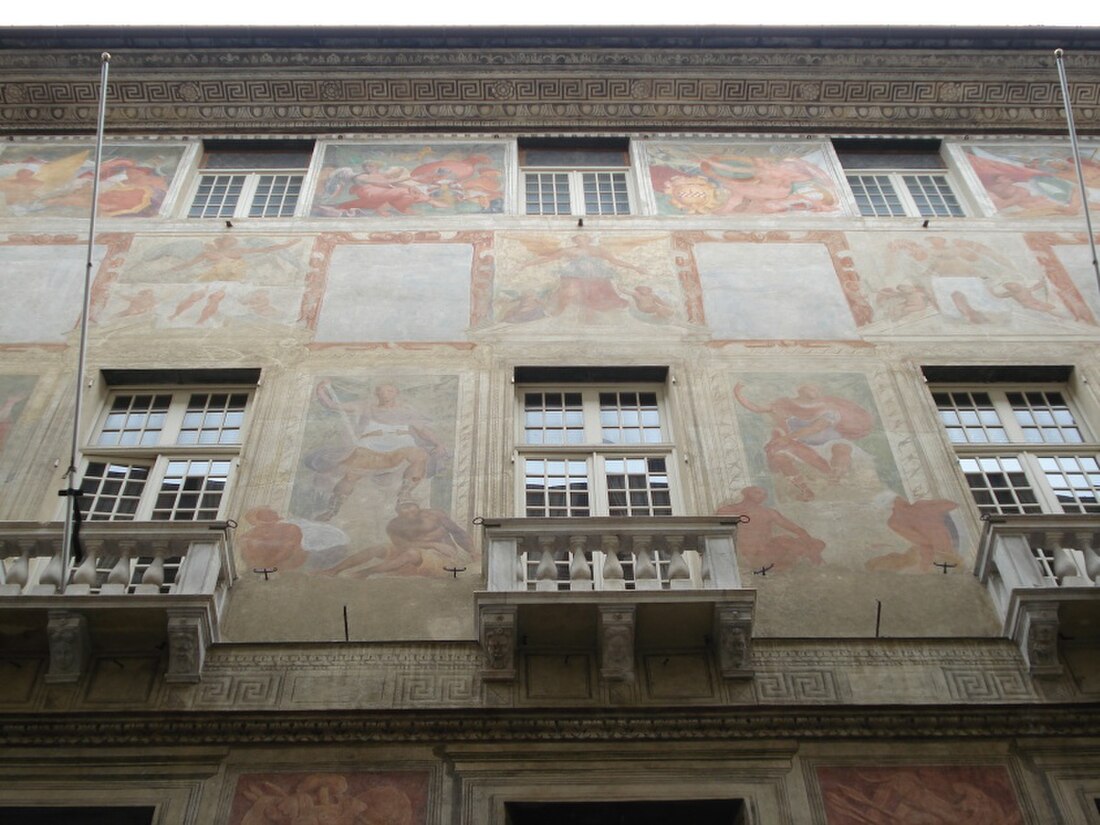Top Qs
Timeline
Chat
Perspective
Palazzo Angelo Giovanni Spinola
Palace in Genoa, Italy From Wikipedia, the free encyclopedia
Remove ads
The Palazzo Angelo Giovanni Spinola is a palace located in Via Garibaldi, in the historical center of Genoa, in Northwestern Italy. It was one of the 163 Palazzi dei Rolli of Genoa, the selected private residences where the notable guests of the Republic of Genoa were hosted during State visits. On 13 luglio del 2006 it was included in the list of 42 palaces which now form the UNESCO World Heritage Site Genoa: Le Strade Nuove and the system of the Palazzi dei Rolli. Now owned by a bank, it is possible to visit the areas open to the public.
Remove ads
The Rolli of Genoa
The Rolli di Genova - or, more precisely, the Rolli degli alloggiamenti pubblici di Genova (Italian for "Lists of the public lodgings of Genoa") were the official lists at the time of the Republic of Genoa of the private palaces and mansions, belonging to the most distinguished Genoese families, which - if chosen through a public lottery - were obliged to host on behalf of the Government the most notable visitors during their State visit to the Republic. Later, these palaces hosted many famous visitors to Genoa during their Grand Tour, a cultural itinerary around Italy[1]
Remove ads
History
The construction of the palace was commissioned in 1558 by Angelo Giovanni Spinola, Ambassador of the Republic of Genoa to Spain and banker in Toledo to Emperor Charles V. The palace was completed in 1576 by his son Giulio, who also ordered in 1580 the excavation of part of the hill behind the palace to expand it with a courtyard and a garden. The building was designed by the architect Giovanni Ponzello. In 1919, the palace was sold to the bank Crédit Commercial de France and was converted into an office building. In 1926, it passed to the Banca d'America e d'Italia and now belongs to Deutsche Bank.
The facade of the palace is decorated with frescoes executed by the Calvi brothers, possibly together with Lazzaro Tavarone. The frescoes depict members of the House of Spinola dressed as Roman condottieri. A staircase decorated by grotesque frescoes leads to the upper floor, decorated with frescoes by Andrea Semino, Bernardo Castello and Lazzaro Tavarone. A fresco attributed to Semino shows the building in its original state, as viewed from a mountain.[2]
Remove ads
References
Gallery
Bibliography
Wikiwand - on
Seamless Wikipedia browsing. On steroids.
Remove ads


